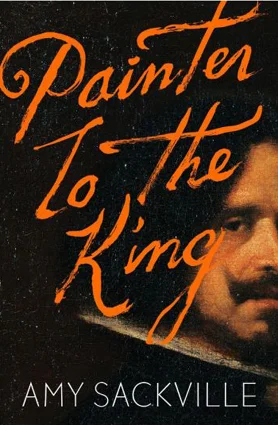One of my highlights of visiting Madrid for the first time was being able to go to the Museo del Prado and see Diego Velázquez’s masterpiece Las Meninas in person. This is a painting I’d studied in art history at university and appreciated for its technique, but there’s something so arresting about seeing it in person with its odd composition and the confrontational stares from several figures depicted. So I was enticed to read Amy Sackville’s most recent novel because it portrays the life of Velázquez in his appointment to the royal court of King Philip IV of Spain. I wasn’t prepared for what a unique take the author gives on the historical novel which doesn’t simply tell the story the painter, the king and people associated with his court, but Sackville inserts her own voice and invites the reader to participate as well. It’s somewhat reminiscent of Patricia Duncker’s “Sophie and the Sybil” which depicts George Eliot’s tangled relationships as well as Duncker’s own feelings towards Eliot. In “Painter to the King” we’re led through Velázquez’s major paintings and shown the scenes and social milieu they sprung out of. But we’re also drawn to focus on certain aspects of the paintings (as pictorial details are reproduced throughout the text) and paintings which have been lost but which we know about through historical references. Sackville queries the gaps in history and the way the figures involved wanted their images and time period to be remembered. It forms such an original take on the past which invites the reader to participate in looking at its many layers as well as enjoying the experience of it in the story.
Philip IV of Spain is a fascinating figure as he was married to a French princess at the age of ten and made king of Spain and Portugal at the age of fifteen. That’s quite a responsibility for such a young boy! Of course, throughout his life he was bred and trained to uphold the Spanish Empire and pressured to secure his lineage with a son. Sackville refers to the urgency he feels to produce a healthy son throughout the novel and as the story progresses it becomes evident this isn’t a novel so much about Velázquez, but about this boy trapped in an impossibly high pressure situation. The painter faithfully records the toll Philip’s royal position takes on him with wrinkles and shadows around his eyes. I felt a growing sympathy for him as Philip frequently takes refuge in the quiet periods he spends with Velázquez while being painted. Sackville also compelling describes the way Philip struggles with his duties, urges, faith and fidelity. At the same time there is a tension between the professional and personal relationship Philip and Velázquez share. But Philip emerges as the most dynamic and fully rounded character in the novel.
Philip IV of Spain painted by Velazquez
Many other fascinating figures emerge as Sackville records this period of the royal court in Spain. There’s a red haired actress who sacrifices her promising career to be Philip’s long term mistress and she bears him the healthy son he always longed for but this boy must be classified as illegitimate. There’s also Sor Maria or Mary of Jesus of Ágreda who was a visionary abbess and spiritual writer that Philip takes as a trusted advisor and he corresponds with her throughout his life. So I felt somewhat disappointed that Sackville dipped into the stories of figures like this, but didn’t develop them further. I appreciated that doing so would have taken over the narrative and strayed from the central focus of the novel. I felt the author’s primary intent with this story is summed up in this quote where she’s writing about Velázquez’s process of painting: “To describe a thing, you describe the space around it; until you encounter the brim, the fringe, the outline, where the thing’s edges meet the world you find it in.” But it sometimes detracted from the pleasure of the novel that Sackville so determinedly portrays the outlines of life at court and glimpses of its most intriguing figures without going further into the heart of their stories.
However, overall I really enjoyed and appreciated how much more Sackville adds to the experience of a historical novel. It was fascinating to consider how this accumulation of paintings of the king must have made Philip reflective in a way not many other people could be in the 1600s because most wouldn’t have a visual record of their lives. It’s interesting to consider how this compares to our experience today since so many people now do have free access to photography which casually records our images over the years. Just as Philip must consider the way Velázquez has chosen to interpret his reign, we consider the way we’ve selected and catalogued out images to give a certain slant to our lives. Though I sometimes felt ambiguous about the authorial intrusion of the narrative, it felt poignant in how Sackville expresses how looking at paintings is a desire for a shared experience. There’s a tragedy in never really knowing how personal experience syncs with or differs from the figures and mood captured in paint. It’s a complex way of engaging with the past and I admire how Sackville gives so many unique ways of seeing this beguiling period of history.









